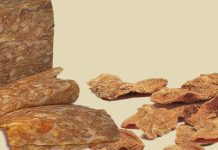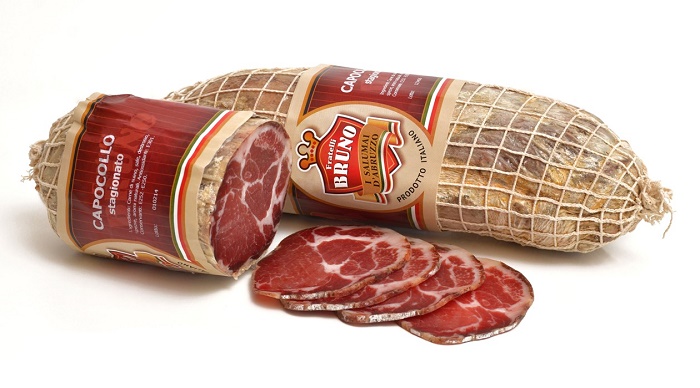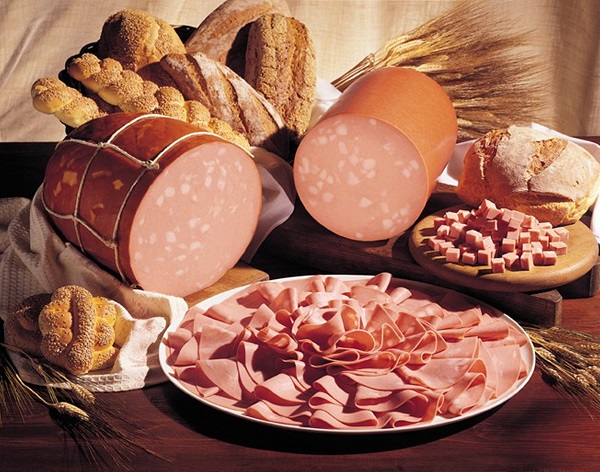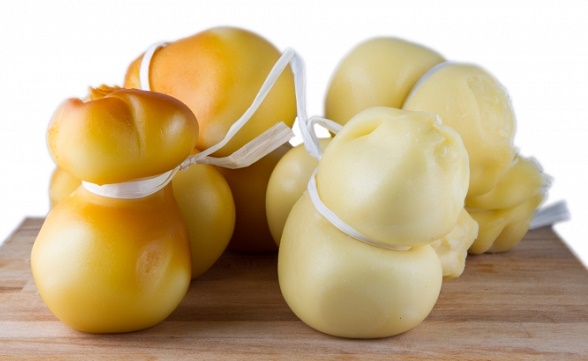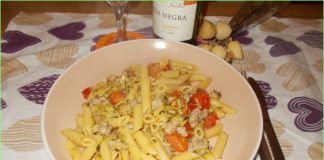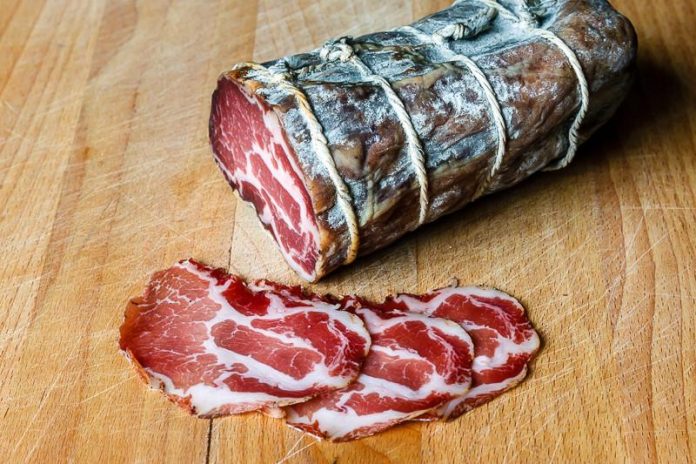
History
The Coppa, commonly called capocollo, capicollo, capicola or finocchio (in the Sienese), lonza (in Lazio), or lonzino (Marche and Abruzzo), is a sausage present throughout the Italian territory, but each region uses production methods and of different conservation, according to the traditions of the place and also to the climate.
This sausage is obtained from the superior processing of the pig’s neck and part of the shoulder (this justifies its name).
For the penetration and distribution of salt, this meat is massaged, then stuffed into a natural gut and left to mature.
During the realization, aromatic herbs and spices are added, typical of the different production locations of this salami. The ancients in the past, during the aging period, used to wrap the meat in a rough cloth, or tie it with a string of hemp.
Preparation
Each region, based on his tradition, uses different methods of preparation of this sausage, such as in the Marche, where for the type of meat they use, this product is considered poor.
The Coppa is produced with an initial phase that is the strip of the head of the pig, its tongue, auricular cartilages and other less noble parts of this animal. The aromas or ingredients used to flavor the Coppa are different: pistachios, nutmeg, cinnamon, oranges and grated lemons or chunks.
The production of this sausage is generally done in winter, and after cooking it is pressed, without the need to be seasoned.
Its color, when cut, is pinkish or slightly greyish, and this variation in color depends on the cooking time. It also has white ribs, which indicate the use of cartilaginous parts of the ears. Its scent and spicy and the flavor has a very aromatic aftertaste.
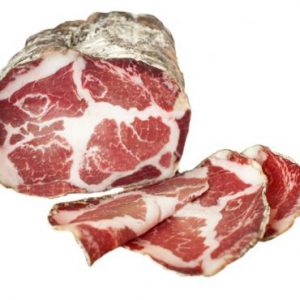
In Piacenza, the Coppa is instead produced after a careful grooming of the pig. The salting phase is made dry (salting in brine is not allowed), with a mixture of salts and natural aromas, such as pepper, cinnamon, cloves, bay leaves, nutmeg, etc.
Once the pork is salted, the Coppas are carefully massaged and placed in the fridge for at least a week.
The next phase, is the coating of the Coppa with parietal pig’s diaphragm. The drying phase takes place after having tied the Coppa with string and drilled the casing.
The sausage is placed in special rooms at a controlled temperature of 15-25° C maximum, and with a humidity that varies between 40 percent and 90 percent. The drying phase does not end until the typical flowering appears, while the maturation phase lasts about six months.
The Coppas on the market, have a weight of about 1,500 g, no less, and the slices at the cut are very compact and homogeneous, red with white-pink shades.
The Piacenza Coppa, being a salami with a high caloric content, must be consumed with some moderation. The production involves the addition of nitrate, not nitrite, and this particular makes the sausage acceptable from a health point of view.
Combined with apples, this salami is excellent served as an appetizer on the table.
Conservation
For proper conservation of this sausage, simply place it in the refrigerator, after having removed the skin and then wrapped it in a dry cloth.
It is a good idea to remove this sausage from the refrigerator at least one hour before proceeding to cut it. We also recommend removing the outer film before going to the cut, making sure that any mold does not alter its taste inside.
If you have a high-seasoned Coppa in the fridge, it is advisable to cover it well with a cloth soaked in white wine for at least a whole day, so as to favor peeling.
Head Coppa (Coppa di Testa)
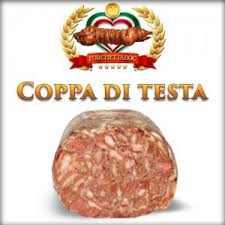
The head Coppa is a very palatable sausage. Its preparation is made entirely using the head of the pig, which after being shaved and deprived of the ears, is put to boil for about four hours, in water with bay leaves.
Once cooked, it is placed on a slightly inclined table, to favor and speed up the dripping phase. At this point, all the bones of the skull are removed, and the remaining meat is coarsely minced with a knife, and the mixture obtained is then flavored with salt, pepper, nutmeg and lemon peel.
It then proceeds to the stuff of the Coppa. The salami is hung and let it cool. Free of preservatives, its conservation is very short, in fact it must be stored in a couple of weeks at most.
It is typically tasted together with polenta or with preferably pre-heated white bread.
This food contains excessively lipid components, it is advisable not to access its consumption.

